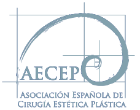Breast reduction
Breast Reduction
Reduction mammoplasty (breast reduction) is the surgical procedure that allows decrease in breast size, achieving smaller, firmer breasts, while provided that the rest of the body anatomy.
In addition to the aesthetic purpose, breast reduction also corrects physical problems, since that for many women the excess breast volume is a source of discomfort and pain back, neck, and even psychological problems that come to affect relations personal.
What is a reduction mammoplasty?
It is an intervention is to reduce the volume of the breast, reshaping the way the breast, and raising the nipple areola complex.
Due to the need to dry skin and gland breast, this technique is associated with its outcome scars that are barely perceptible.
Who needs it?
There are two major indications: A need to improve the weight distribution of the breasts on the spine, improving back pain associated with it. Another purely aesthetics, in order to adapt the breast volume to body contouring. To mold breasts and give them a harmonious chord with the anatomy of the patient, the surgeon makes a incisions usually shaped anchor, drawing a vertical line down from the areola and a horizontal line in the submammary fold. Areola be preserved together with their glasses blood and their nerves in most cases. However, in processes of large reductions, it is customary to separate the areola totally and replace it. Will the surgeon decide the appropriateness of the techniques to follow in each intervention, according to the characteristics characteristic of patient .Too; can reduce the size of the areola, if necessary.
Who should exercise caution?
The mammoplasty is contraindicated in any patient with breast disease known or suspected, as well as in pregnant, lactating or up to six months after childbirth.
Anesthesia
General anesthesia.
Technique
Most important of breast reduction is to determine how breast volume and skin should be rejected.
This previous measurements and preoperative marking are determinants, and define the result of the intervention.
There are three types of arrangements incisions depending on the magnitude of the problem to solve:
- Periareolar, around the areola, for cases minimal.
- Combination of periareolar and vertical slice for cases moderate.
- Periareolar, vertical and transverse groove in the breast (in inverted “T”) for cases important.
The choice of technology depends on the judgment of the surgeon and the characteristics of the breast operation: age, skin quality and volume to reduce. But in any case it should be ensure that scars are as thin as possible, and that cannot withstand voltage. The suture is intradermally. Moreover, the nipple is moved together with the mammary gland, except in cases that there may be a risk that the blood does not reach the tip and die, then the complex areola nipple off and then grafted. Drains are left to be removed at days following before hospital discharge.
Recovery
After the recovery time from anesthesia, the patient goes to the room, where it remains until the next day with some drains that are removed before leaving. At home, prescribed 48 hours of complete rest, and then some rest (you can move with some freedom, without making sudden movements, or charge weight) for 10 or 15 days at which time was removed points, and return to normal life, but wearing a bra that shapes the breast and prevents scars to distend.
Duration of intervention
Approximately three hours.
What risk is there?
Although a low frequency, the following complications may occur:
Hematoma: is the collection of blood that occurs when the clot that clogs a glass is clear. in cases of intraoperative bleeding drains are left, but once established the hematoma, reoperation is necessary to evacuate.
Infection: The risk of infections today is very low, as are prevented by antibiotic treatment. Still, if it appears, and by degree of intensity, its effects could affect the appearance of the scar and result in general.
Widening of scars: It is not uncommon to find enlargement of the scars have been subjected to a tension, especially when applied in a breast implant. In some cases expected, and scheduled a retouch of the scar to improve their appearance.
Hypertrophic scars and keloids: The scar may be of poor quality, thick and extremely slow to whiten (HCM) which depends on the circumstances nature of the patient and his age.
A keloid is a disease of the scar, with a excessive growth of it. In the white race is rare, however, in the black their occurrence is not uncommon.
Hyperpigmentation of scars, either by the nature of patient, premature exposure to the sun, or taking medications. to resolve this complication is used peeling skin lightening creams and laser treatment well, good results.
Necrosis: When the breast is big, regardless of the technique is properly performed, is sometimes complicated the absence of movement in the tip of the ‘flap’ which serves to move the nipple areolar complex and therefore it is lost and must be rebuilt. There is a common event, but must be taken into account and the patient should be warned.
Seroma: Clumps of serous fluid that if there should be evacuated, but no importance.
Frequently asked questions about breast reduction
Can you breastfeed after this type of intervention?
In cases where the reduction is important (from 500 gr.), we can not assure the patient that can keep breastfeeding.
Is there loss of sensitivity?
In significant reductions may be a loss of erotic sensibility, the touch is recovered.
They say that the scars can be deleted later with laser.
There is no technique to erase the scars. Can be improved with different procedures among which includes laser.









